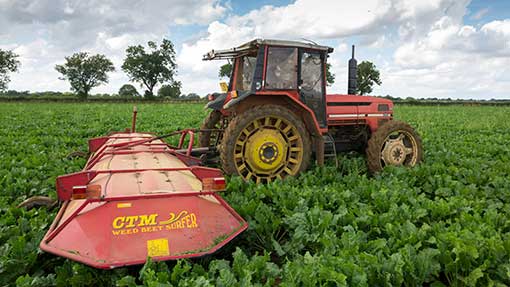Four beet problems to look out for in 2014

Sugar beet growers need to be vigilant for four key diseases and pests in 2014, including rhizoctonia and also one new fungal threat which has cut Dutch yields by up to 40%.
While rhizoctonia is not a new disease, Mark Stevens, lead scientist at the British Beet Research Organisation (BBRO), believes it is still the one to watch, as it has been causing concerns in Europe and the USA.
“It causes damping off and blackleg in early growth stages, but you don’t tend to see much of it with the regular use of fungicides applied to the seed,” he says.
But the worry is that there are some strains that affect both beet and maize.
“So, with more maize being grown in rotations to supply anaerobic digesters, we could see more rhizoctonia carry-over from maize stubbles,” he says.
“We are already seeing this in the Netherlands where growers have had to switch to resistant varieties. We need to be aware of the maize issue,” he adds.
US trials show fungicides can successfully control it, but Dr Stevens questions whether maize breeders should consider resistance when selecting future varieties to help avoid build-up across the rotation.
Another disease of concern is the new fungal disease stemphylium, which has spread very rapidly in the Netherlands and is now being seen in Germany and Belgium.
Infection results in irregular yellow spots (0.5-2 mm) with older spots being brownish and big (1-3 cm). It is of major concern, as it leads to leaf necrosis and reduces yields by as much as 40%.
“Stemphylium hasn’t been seen in the UK yet, but we need to keep an eye out for it. It can be controlled by applying just-in-time fungicides, but not all products control it,” he says.
Moving to current UK diseases, last season saw more downy mildew attacking crops early on at the six- to eight-leaf stage.
“Secondary symptoms can be confused with yellows virus as you see yellow older leaves, but closer inspection shows it was triggered by earlier infection with downy mildew. It can eventually lead to infection with secondary root rots,” he says.
Finally, late leaf miner seemed to be affecting crops along coastal strips.
“We are not alone, as the trend is also being seen in Europe. We don’t know where they are coming from and it is something which we will investigate,” he says.

